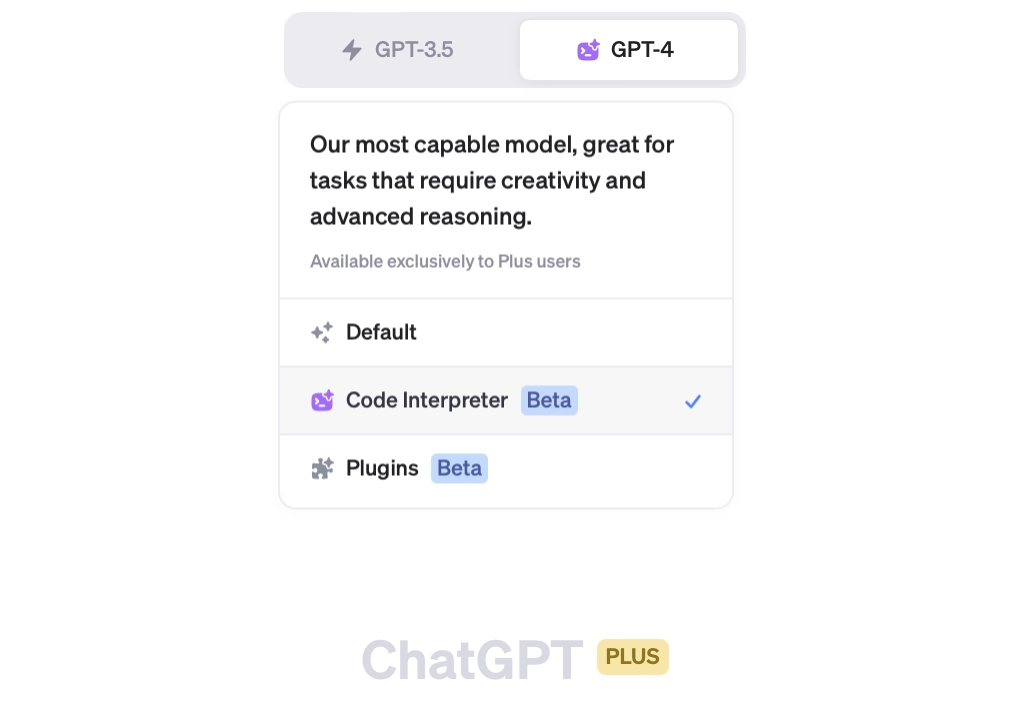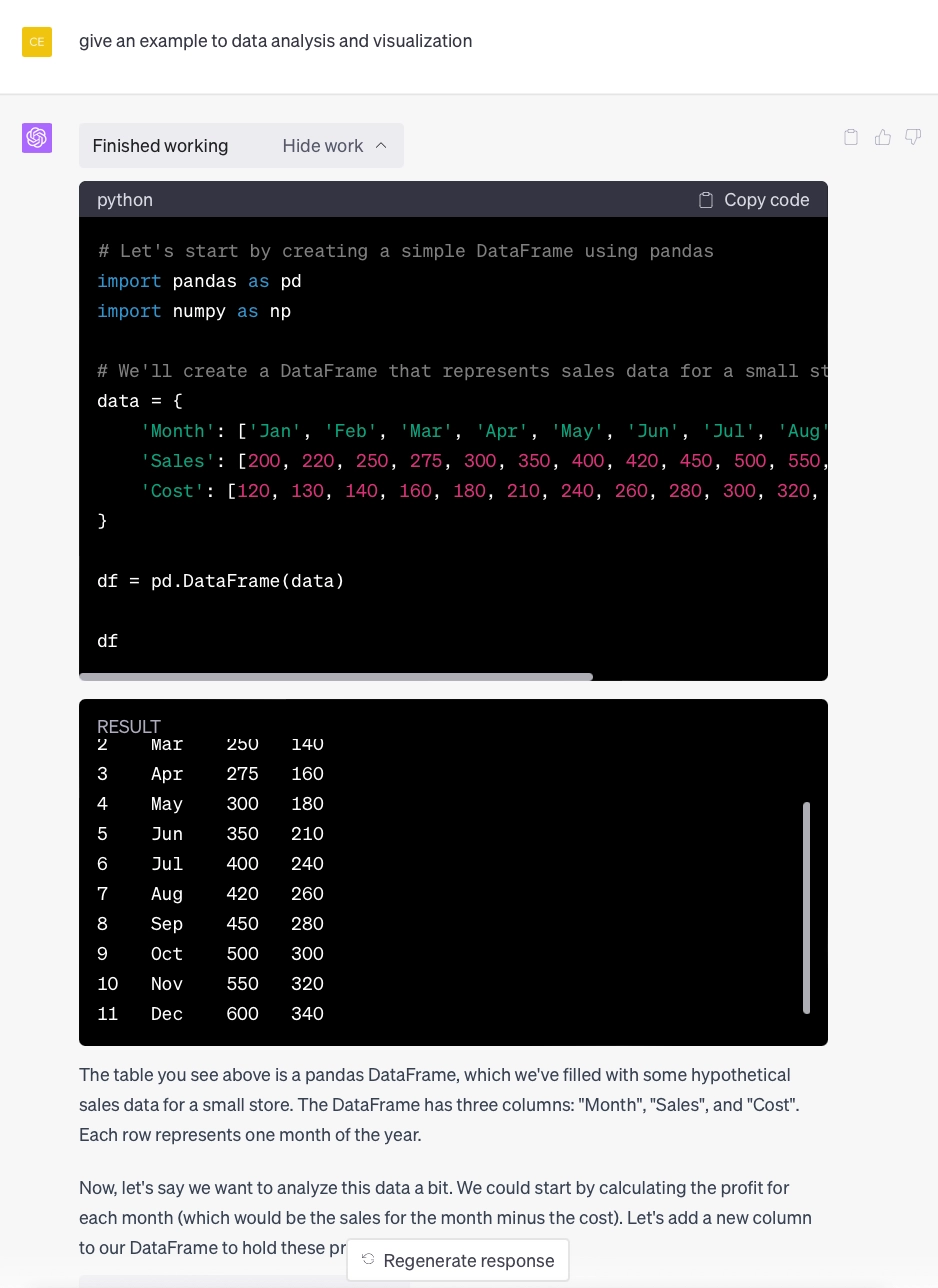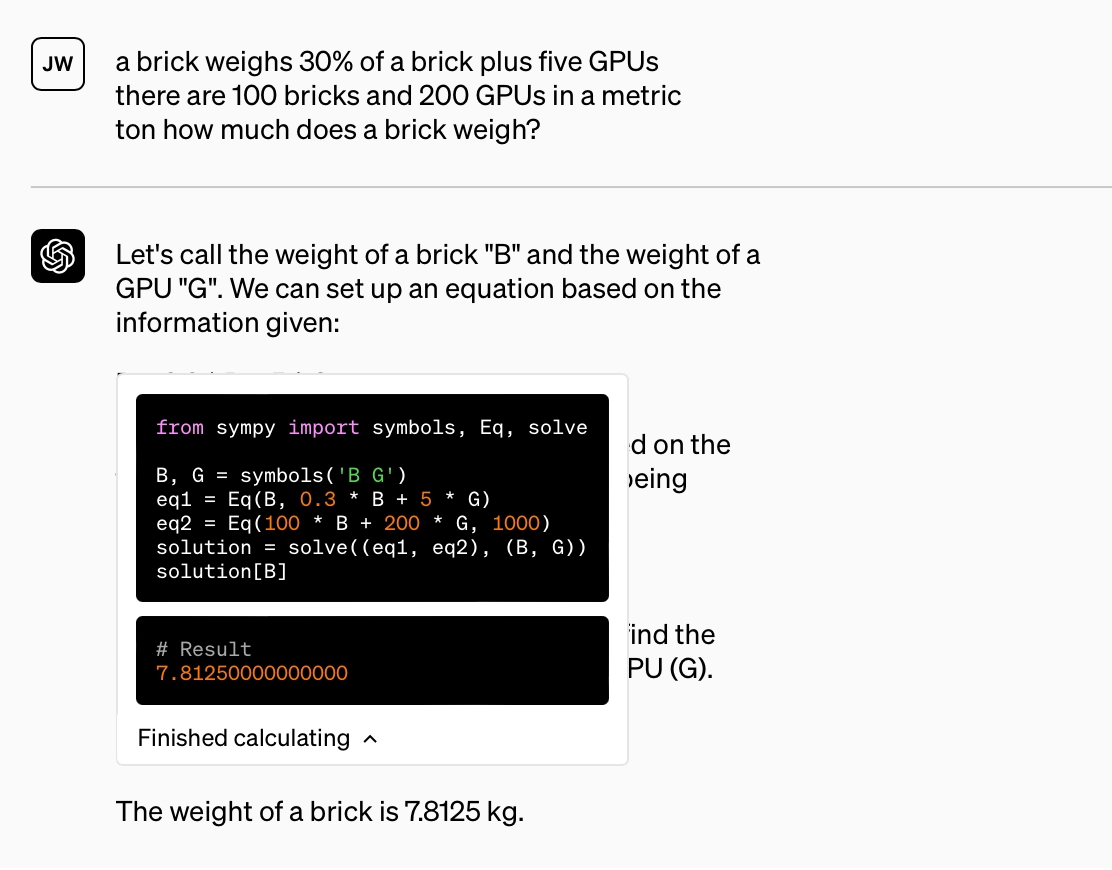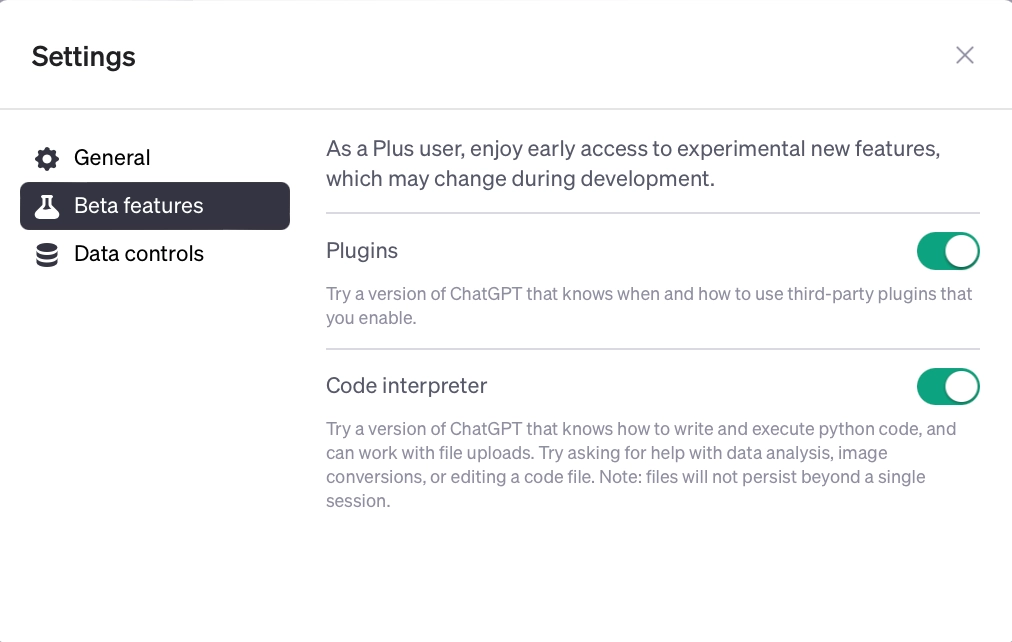Since the release of ChatGPT, programmers and more advanced users of the tool were curious whether OpenAI will allow plugins to the chatbot. OpenAI announced the first plugins in April, followed by many others since then. At the beginning of July 2023, they announced an official ChatGPT plugin, the Code Interpreter.
Figure 1. ChatGPT code interpreter plugin

In this article, we will explain what ChatGPT code interpreter is, together with its use cases and limitations. In this article, we will explain what ChatGPT code interpreter is, together with its use cases and limitations. In this article, we will explain what ChatGPT code interpreter is, together with its use cases and limitations.
What is the ChatGPT code interpreter plugin?
OpenAI’s ChatGPT Code Interpreter feature is a multifunctional plugin that enhances the AI chatbot’s ability to handle data and carry out different operations. This plugin equips ChatGPT with the capacity to formulate and run code in natural language, facilitating effective data examination, file transformations, and beyond.
The code interpreter plugin is capable of managing both file uploads and downloads, permitting direct interaction with data files, such as images and videos. In addition to these, the code interpreter can work with a wide array of file formats, encompassing CSV, JSON, and many others.
What are the use cases of the ChatGPT code interpreter plugin?
1- Data analysis and data visualization
The plugin can be used to load datasets, perform transformations, and analyze data using Python libraries like pandas, numpy, and matplotlib. You can ask the model to perform certain analysis tasks and it will write and execute the appropriate Python code. Also, you can ask the model to visualize your data in a preferred format.
Figure 2. Data analysis with ChatGPT code interpreter

Figure 3. Data visualization with ChatGPT code interpreter

2- Converting files
The code interpreter can convert files between different formats, provided that the necessary libraries are available and the operation can be performed using Python code. Here are a few examples:
- Text Files: Python’s built-in functions can be used to read a file in one text format and write it out in another text format.
- CSV and Excel: The pandas library can read data from a CSV file or an Excel file and write it out to a different format. For example, you could read data from a CSV file and write it out to an Excel file, or vice versa.
- Images: The interpreter can make image conversions by using required libraries. The PIL (Pillow) library can read images in one format (like JPEG) and save them in a different format (like PNG).
- JSON and XML: There are libraries like json and xml in Python that can be used to convert data between JSON and XML formats.
The exact capabilities will depend on the specific Python libraries that are available in the environment. Also, while the code interpreter can read and write files, the files must be within the session and the code interpreter does not have internet access to download or upload files.
Figure 4. File conversion with ChatGPT code interpreter

3- Code development
The ChatGPT code interpreter is quite versatile and can perform a wide variety of coding tasks, within the limits of the Python programming language and the libraries available in the environment. Here are some of the key capabilities:
- Executing Python Code: The interpreter can run almost any Python code, including defining and calling functions, using control structures (like loops and conditionals), editing code and more.
- Interactive Coding: You can use the interpreter for writing and testing small pieces of Python code. This is especially useful for debugging or for trying out new concepts or libraries.
- Data Analytics: The interpreter can be used to perform a wide variety of data analysis tasks, including loading and transforming data, calculating statistical measures, and more.
- Prototyping: If you’re working on a larger project, you can use the interpreter to prototype small parts of your code before integrating them into the main project.
- Text Processing: The interpreter can perform various text processing tasks such as tokenization, string manipulation, and even some natural language processing tasks, which can be useful in a variety of fields and applications.
4- Solving mathematical problems
The interpreter can perform complex mathematical operations and computations using libraries like Numpy and Scipy. This includes tasks like solving systems of equations, performing matrix operations, and calculating statistical measures.
Figure 5. Solving mathematical problems with ChatGPT code interpreter

Source: OpenAI1
How can the ChatGPT code interpreter plugin be used?
Access to the ChatGPT plugins and code interpreter is exclusive to ChatGPT Plus subscribers, which entails a monthly subscription charge. If you have a plus account, follow this step-by-step guide to navigate the ChatGPT Code Interpreter:
- Log in to ChatGPT on the OpenAI website.
- Go to “Settings” from the bottom-left corner where your profile is.
- Choose “Beta features” from the menu.
- Click on the Code Interpreter toggle.
- Now, you can start a chat with the code interpreter plugin if you choose.
Figure 6. Setting up the ChatGPT code interpreter plugin

What are the limitations of ChatGPT code interpreter?
- No internet access: The code interpreter is not connected to the internet, meaning it’s unable to directly retrieve data from the web or engage with online APIs. Although the lack of internet access limits the functionality, it provides a safe code interpreter environment.
- Language limitation: The code interpreter only supports Python as a language.
- Data size limitation: A user can upload a document that is up to 512MB.
- External packages: The interpreter doesn’t allow external Python packages. Nonetheless, the programming environment is pre-equipped with more than 330 packages.
If you have questions or need help in finding vendors, don’t hesitate to contact us:

Comments
Your email address will not be published. All fields are required.